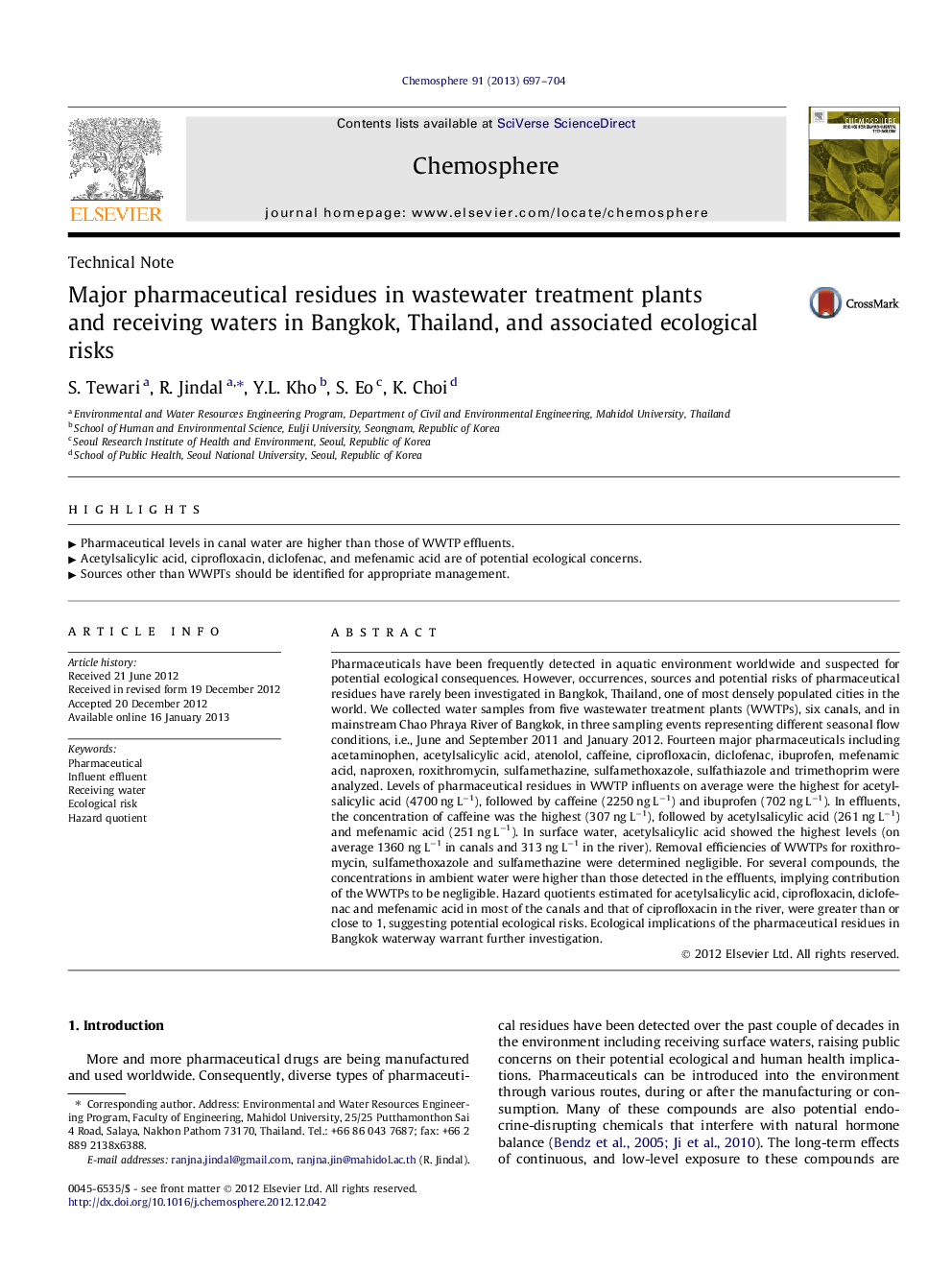| کد مقاله | کد نشریه | سال انتشار | مقاله انگلیسی | نسخه تمام متن |
|---|---|---|---|---|
| 4409388 | 1307480 | 2013 | 8 صفحه PDF | دانلود رایگان |

Pharmaceuticals have been frequently detected in aquatic environment worldwide and suspected for potential ecological consequences. However, occurrences, sources and potential risks of pharmaceutical residues have rarely been investigated in Bangkok, Thailand, one of most densely populated cities in the world. We collected water samples from five wastewater treatment plants (WWTPs), six canals, and in mainstream Chao Phraya River of Bangkok, in three sampling events representing different seasonal flow conditions, i.e., June and September 2011 and January 2012. Fourteen major pharmaceuticals including acetaminophen, acetylsalicylic acid, atenolol, caffeine, ciprofloxacin, diclofenac, ibuprofen, mefenamic acid, naproxen, roxithromycin, sulfamethazine, sulfamethoxazole, sulfathiazole and trimethoprim were analyzed. Levels of pharmaceutical residues in WWTP influents on average were the highest for acetylsalicylic acid (4700 ng L−1), followed by caffeine (2250 ng L−1) and ibuprofen (702 ng L−1). In effluents, the concentration of caffeine was the highest (307 ng L−1), followed by acetylsalicylic acid (261 ng L−1) and mefenamic acid (251 ng L−1). In surface water, acetylsalicylic acid showed the highest levels (on average 1360 ng L−1 in canals and 313 ng L−1 in the river). Removal efficiencies of WWTPs for roxithromycin, sulfamethoxazole and sulfamethazine were determined negligible. For several compounds, the concentrations in ambient water were higher than those detected in the effluents, implying contribution of the WWTPs to be negligible. Hazard quotients estimated for acetylsalicylic acid, ciprofloxacin, diclofenac and mefenamic acid in most of the canals and that of ciprofloxacin in the river, were greater than or close to 1, suggesting potential ecological risks. Ecological implications of the pharmaceutical residues in Bangkok waterway warrant further investigation.
► Pharmaceutical levels in canal water are higher than those of WWTP effluents.
► Acetylsalicylic acid, ciprofloxacin, diclofenac, and mefenamic acid are of potential ecological concerns.
► Sources other than WWPTs should be identified for appropriate management.
Journal: Chemosphere - Volume 91, Issue 5, April 2013, Pages 697–704